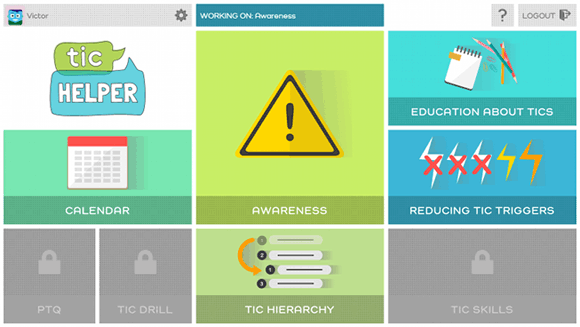Helping Kids Help Themselves
Having launched many start-ups for itself and its clients, Bouncing Pixel welcomes any opportunity to get great ideas off the ground. But when it comes to helping kids live happier and healthier lives, you could say we have a soft spot. That’s why we were pretty excited when we got the chance to develop TicHelper.
 TicHelper Dashboard
TicHelper Dashboard
Solving an Old Problem With a New Idea
A tic is a sudden, repetitive movement or sound that a person makes involuntarily. Chronic Tic Disorders (CTD) affect 0.6 to 3 percent of school-aged children, and can lead to impairment in physical, social, and academic functioning, reducing the overall quality of life.
A team of Houston psychologists wanted to develop a way to help these kids using a treatment known as Comprehensive Behavioral Interventions for Tics (CBIT). This approach reduces tics in children without the troubling side effects that come with pharmacotherapy/using medication.
CBIT methods have proven effective, but unfortunately such treatment is not easily obtainable to everyone. Though there is therapist-guided CBIT protocol available, not many patients have access to delivery from trained professionals.
Understanding the Goals and Needs
The first step was to roadmap the project by turning a grant application into a visual diagram. The web application was then scoped, designed, and developed around three core components of CBIT:
PSYCHOEDUCATION
After creating an account, parents and children can watch a series of short videos that describe tics and the purpose of TicHelper.
ASSESSMENT
Users then answer a questionnaire to self-evaluate their tics, and create a "hierarchy" which can be used to decide which specific tic to work on.
FUNCTION BASED TREATMENT
Once the tics have been identified, the site suggests skills and behaviors for parents and children to follow.
Delivering the Online Intervention
Using "Competing Response Training," children learn how to recognize a tic and practice alternative behavior when they anticipate one is coming. Like any self-help tool that needs repetition and objectives, TicHelper prompts users to record goals and follow up with check-ins to keep parents and children on track and work through every tic that was identified.

"If you've ever had hiccups in a quiet room, you know how embarrassing and completely uncontrollable they can feel. What if, instead of the hiccups, your body jerked involuntarily or you blurted out words without meaning to? That's a rough idea of what living with Tourette syndrome can be like."

"TicHelper was developed to disseminate CBIT, and we believe it has strong potential in this regard. The program is a good middle ground between a self-help book and traditional therapy."









